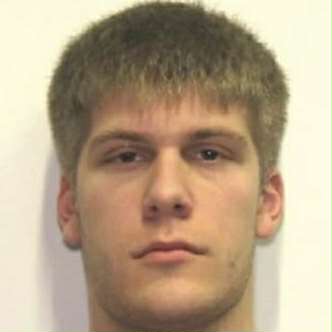
b: 1991
Travis Brandon Baumgartner
Summary
Name:
Years Active:
2012Birth:
May 16, 1991Status:
ImprisonedClass:
MurdererVictims:
3Method:
ShootingNationality:
Canada
b: 1991
Travis Brandon Baumgartner
Summary: Murderer
Name:
Travis Brandon BaumgartnerStatus:
ImprisonedVictims:
3Method:
ShootingNationality:
CanadaBirth:
May 16, 1991Years Active:
2012Date Convicted:
September 9, 2013bio
Travis Brandon Baumgartner was born on May 16, 1991, and raised in Sherwood Park, Alberta, a suburban area just east of Edmonton. He lived with his mother and was considered by those who knew him to be socially awkward, emotionally withdrawn, and often at odds with his peers. Prior to the murders, Baumgartner struggled with serious personal and financial issues. At the time of the attack in 2012, he reportedly had just 26 cents in his bank account and owed approximately $58,000 in debt to his mother and close friends. This debt stemmed from a car purchase and other personal expenses, and Baumgartner felt emotionally burdened by having accepted financial help over the years.
He had been employed for just two months by G4S Cash Solutions, a security company that required employees to obtain a federal firearms license, which includes background checks. Despite the company reporting no prior disciplinary issues, it would later come to light that Baumgartner had displayed concerning behaviors. Days before the shooting, on June 1, 2012, Baumgartner posted on Facebook: “I wonder if I’d make the six o’clock news if I just started popping people off.” Friends dismissed these remarks as dark humor, though in hindsight, they would appear chillingly prophetic.
Baumgartner reportedly confided in at least one friend that he fantasized about robbing his coworkers, albeit in a joking manner. However, according to statements he later gave to police, he harbored resentment toward several coworkers, who he believed ridiculed or looked down on him. His feelings of alienation, financial desperation, and growing hostility toward his work environment culminated in one of the worst mass killings in Alberta's modern history.
murder story
On the morning of June 15, 2012, Baumgartner joined three of his G4S colleagues—Armoured Guards Michelle Shegelski, Eddie Rejano, and Brian Ilesic—on a scheduled cash delivery and pickup route that included stops at several locations on the campus of the University of Alberta in Edmonton. At approximately 12:15 a.m., while the crew was handling cash inside the university’s Hub Mall, Baumgartner pulled out a firearm and shot his coworkers execution-style.
Three of the guards—Rejano, Shegelski, and Ilesic—were killed instantly. A fourth guard, Matthew Schuman, was critically injured but survived. After the shooting, Baumgartner fled with over CAD $340,000 in stolen cash. He returned home briefly, changed vehicles, and began driving west across Alberta and into British Columbia, hoping to cross into the United States.
His escape lasted less than 48 hours. On June 17, 2012, Baumgartner was arrested by U.S. Customs and Border Protection officers while attempting to cross the border into the U.S. at Lynden, Washington. He was found with large amounts of cash in his possession and was transferred to a Royal Canadian Mounted Police (RCMP) facility, where he eventually confessed to an undercover officer placed in his holding cell. His chilling words were: “I did it all. I killed those people and robbed their truck.”
Baumgartner was charged with three counts of first-degree murder, one count of attempted murder, and four counts of armed robbery. On September 9, 2013, in a surprise legal move, he pleaded guilty to one count of first-degree murder (for the death of Eddie Rejano), two counts of second-degree murder (for Shegelski and Ilesic), and one count of attempted murder (for Schuman). On September 11, 2013, he was sentenced to life imprisonment with no possibility of parole for 40 years, the harshest sentence ever handed down in Canadian legal history at that time.
The sentence meant Baumgartner would not be eligible for parole until 2052, when he would be 61 years old. The case sent shockwaves across Canada, highlighting the vulnerabilities in private security protocols and the dangers of internal threats. The University of Alberta and G4S Canada both reviewed and upgraded their procedures following the killings.